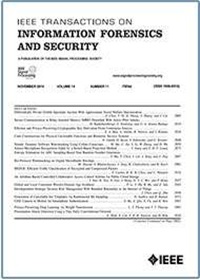DDL: Effective and Comprehensible Interpretation Framework for Diverse Deepfake Detectors
IF 6.3
1区 计算机科学
Q1 COMPUTER SCIENCE, THEORY & METHODS
IEEE Transactions on Information Forensics and Security
Pub Date : 2025-03-21
DOI:10.1109/TIFS.2025.3553803
引用次数: 0
Abstract
In the context of escalating advancements in AI generative technologies, Deepfakes, the sophisticated face forgeries created using deep learning methods, have emerged as a significant security threat. The predominant countermeasures are Deepfake detectors based on deep learning (DL). However, due to the opaque nature of DL-model, they struggle to offer understandable explanations for their predictive decisions, which undermines their reliability and effectiveness in real-world applications. Existing mainstream DL-oriented interpretation approaches, the feature attribution methods, struggle to work on Deepfake detectors due to issues of low interpretation fidelity, poor intelligibility, and limited applicability across different types of detectors. This paper addresses these critical challenges by proposing the Deepfake Detector Lens (DDL:适用于多种深度伪造检测器的有效且可理解的解释框架
本文章由计算机程序翻译,如有差异,请以英文原文为准。
求助全文
约1分钟内获得全文
求助全文
来源期刊

IEEE Transactions on Information Forensics and Security
工程技术-工程:电子与电气
CiteScore
14.40
自引率
7.40%
发文量
234
审稿时长
6.5 months
期刊介绍:
The IEEE Transactions on Information Forensics and Security covers the sciences, technologies, and applications relating to information forensics, information security, biometrics, surveillance and systems applications that incorporate these features
 求助内容:
求助内容: 应助结果提醒方式:
应助结果提醒方式:


